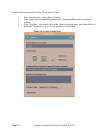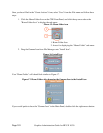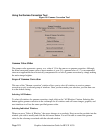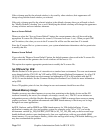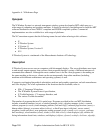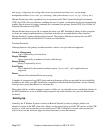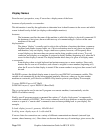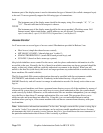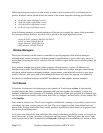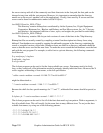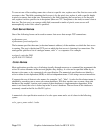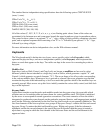Display Names
From the user's perspective, every X server has a display name of the form:
hostname:displaynumber.screennumber
This information is used by the application to determine how it should connect to the server and which
screen it should use by default (on displays with multiple monitors):
hostname
The hostname specifies the name of the machine to which the display is physically connected. If
the hostname is not given, the most efficient way of communicating to a server on the same
machine will be used.
displaynumber
The phrase "display" is usually used to refer to the collection of monitors that share a common
keyboard and pointer (mouse, tablet, etc.). Most workstations tend to only have one keyboard,
and therefore, only one display. Larger, multi-user systems, however, will frequently have
several displays so that more than one person can be doing graphics work at once. To avoid
confusion, each display on a machine is assigned a display number (beginning at 0) when the X
server for that display is started. The display number must always be given in a display name.
screennumber
Some displays share a single keyboard and pointer among two or more monitors. Since each
monitor has its own set of windows, each screen is assigned a screen number (beginning at 0)
when the X server for that display is started. If the screen number is not given, then screen 0 will
be used.
On POSIX systems, the default display name is stored in your DISPLAY environment variable. This
variable is set automatically by the xterm terminal emulator. However, when you log into another
machine on a network, you'll need to set DISPLAY by hand to point to your display. For example,
% setenv DISPLAY myws:0 (C Shell)
$ DISPLAY=myws:0; export DISPLAY (Korn Shell)
The xon script can be used to start an X program on a remote machine; it automatically sets the
DISPLAY variable correctly.
Finally, most X programs accept a command line option of "-display displayname" to temporarily
override the contents of DISPLAY. This is most commonly used to pop windows on another person's
screen or as part of a "remote shell" command to start an xterm pointing back to your display. For
example,
$ xload -display joesws:0 -geometry 100x100+0+0
$ rsh big xterm -display myws:0 -ls </dev/null &
X servers listen for connections on a variety of different communications channels (network byte
streams, shared memory, etc.). Since there can be more than one way of contacting a given server, the
Graphics Administration Guide for HP-UX 10.20
Page 128




